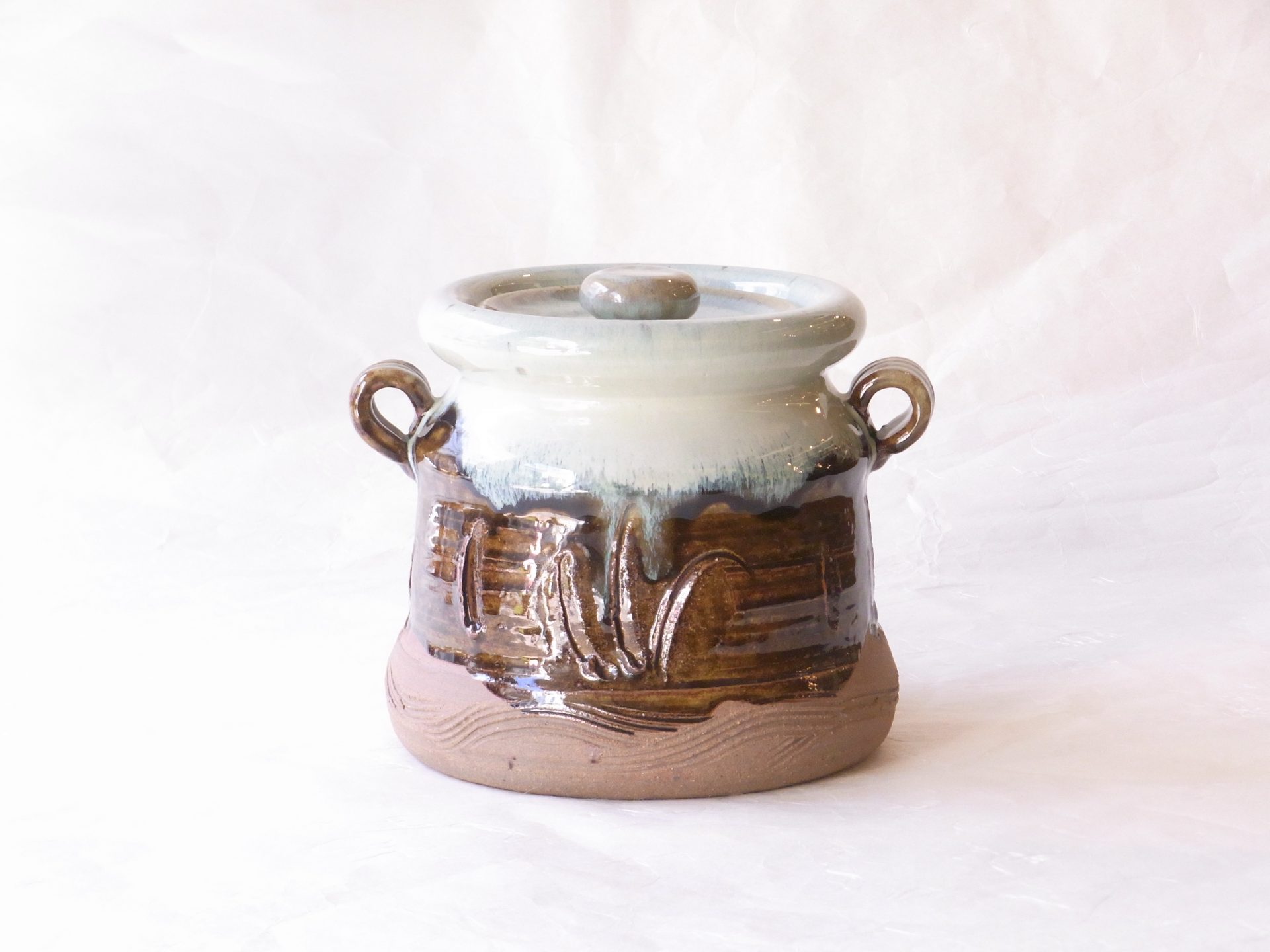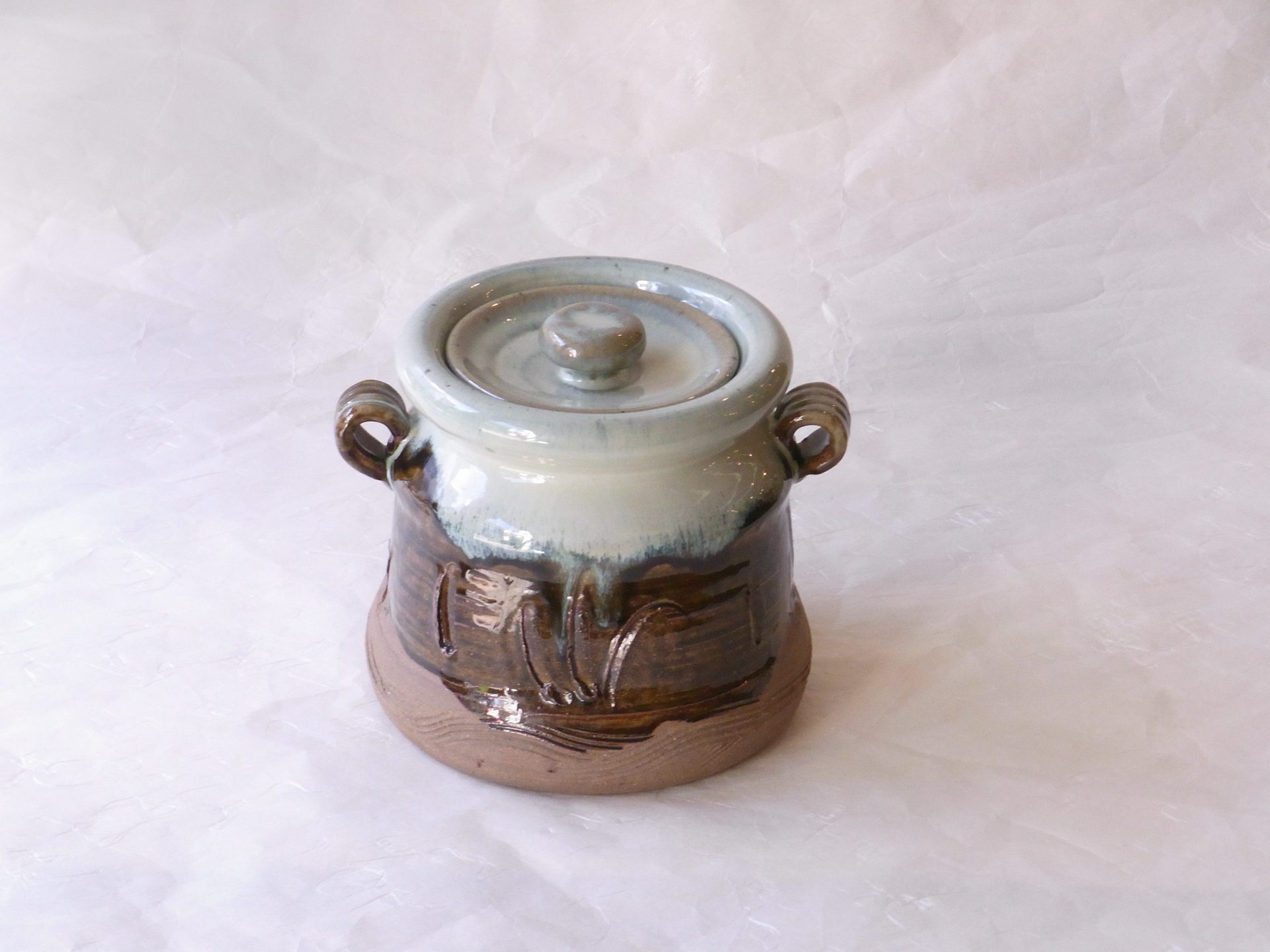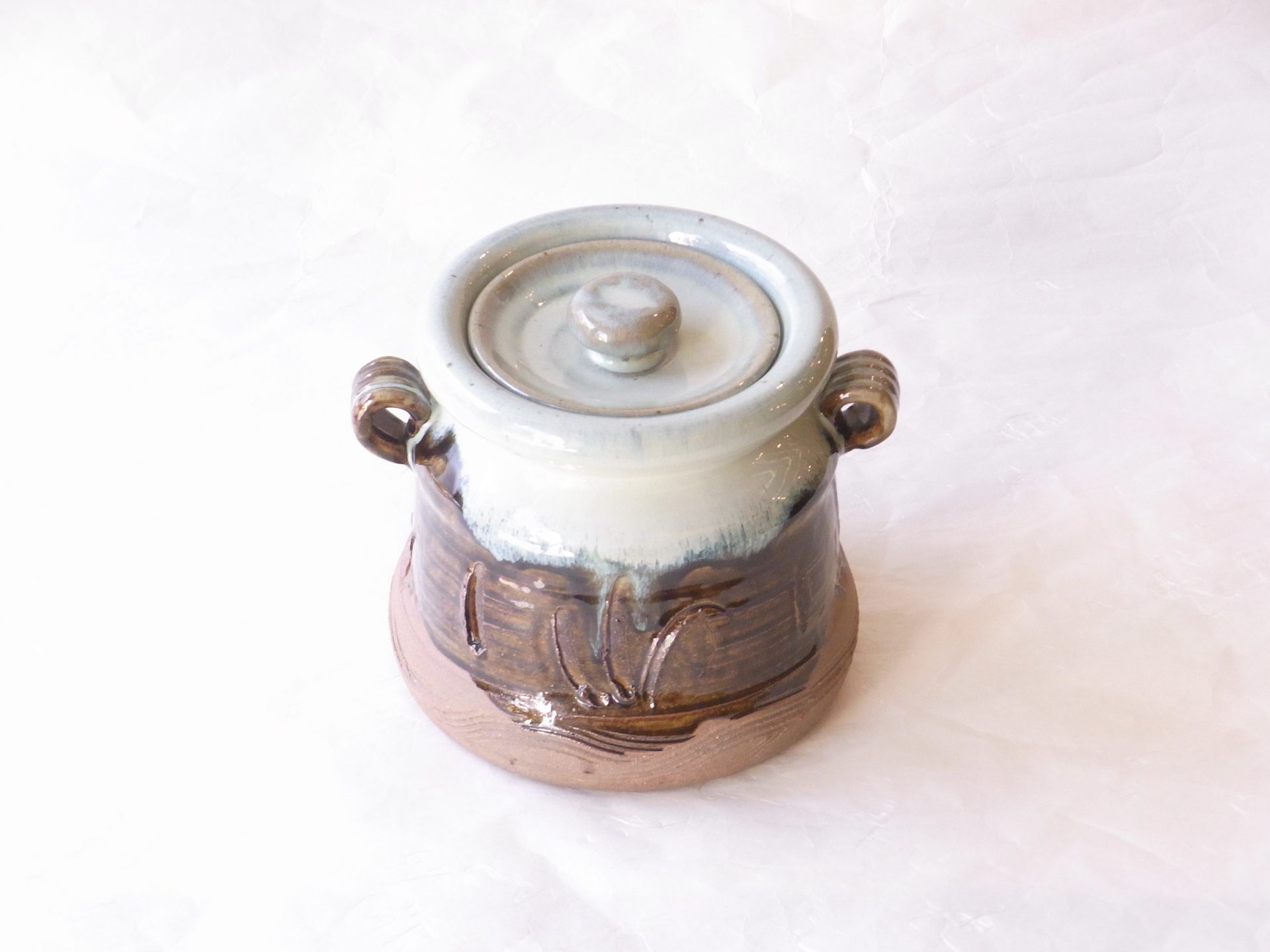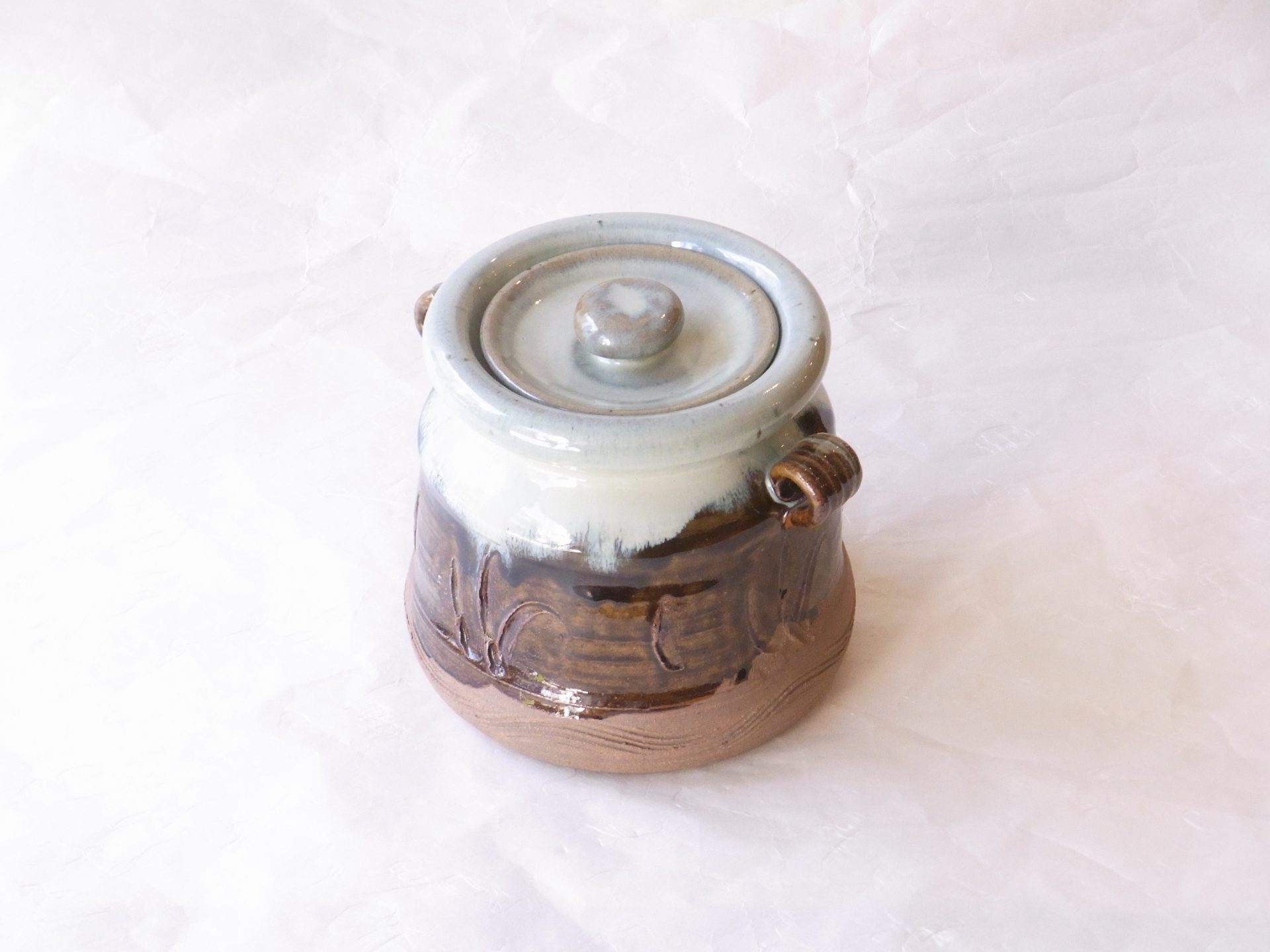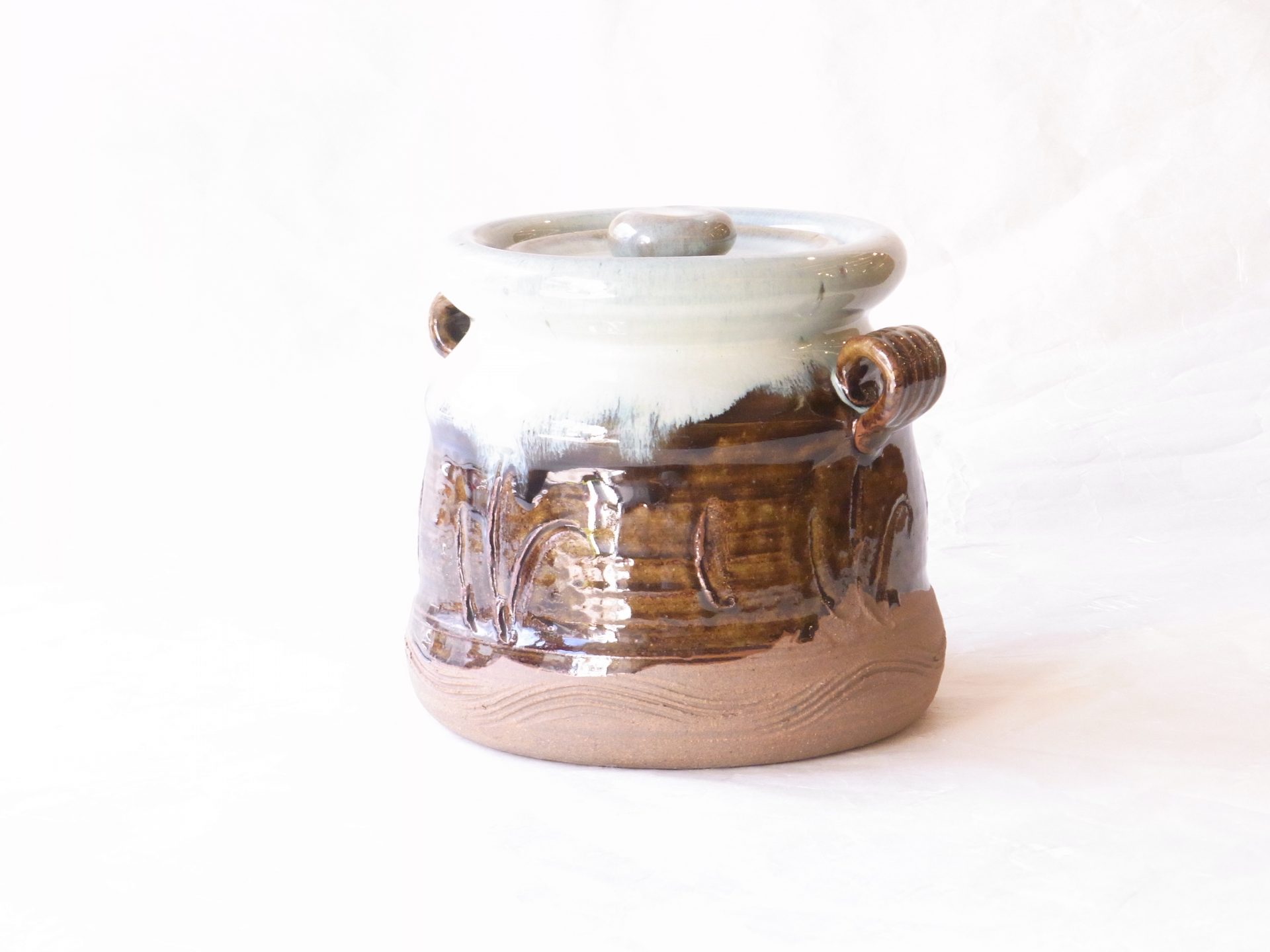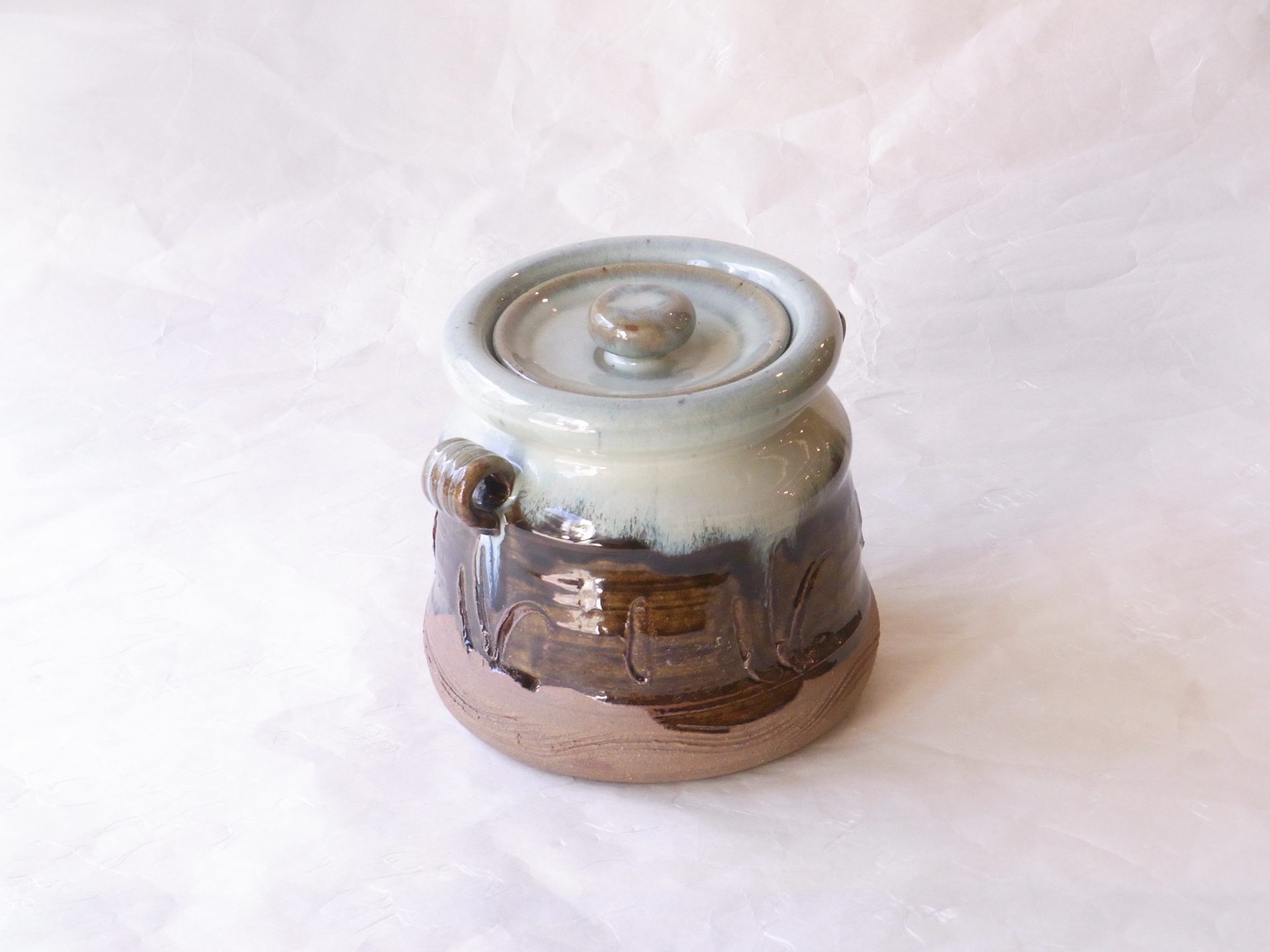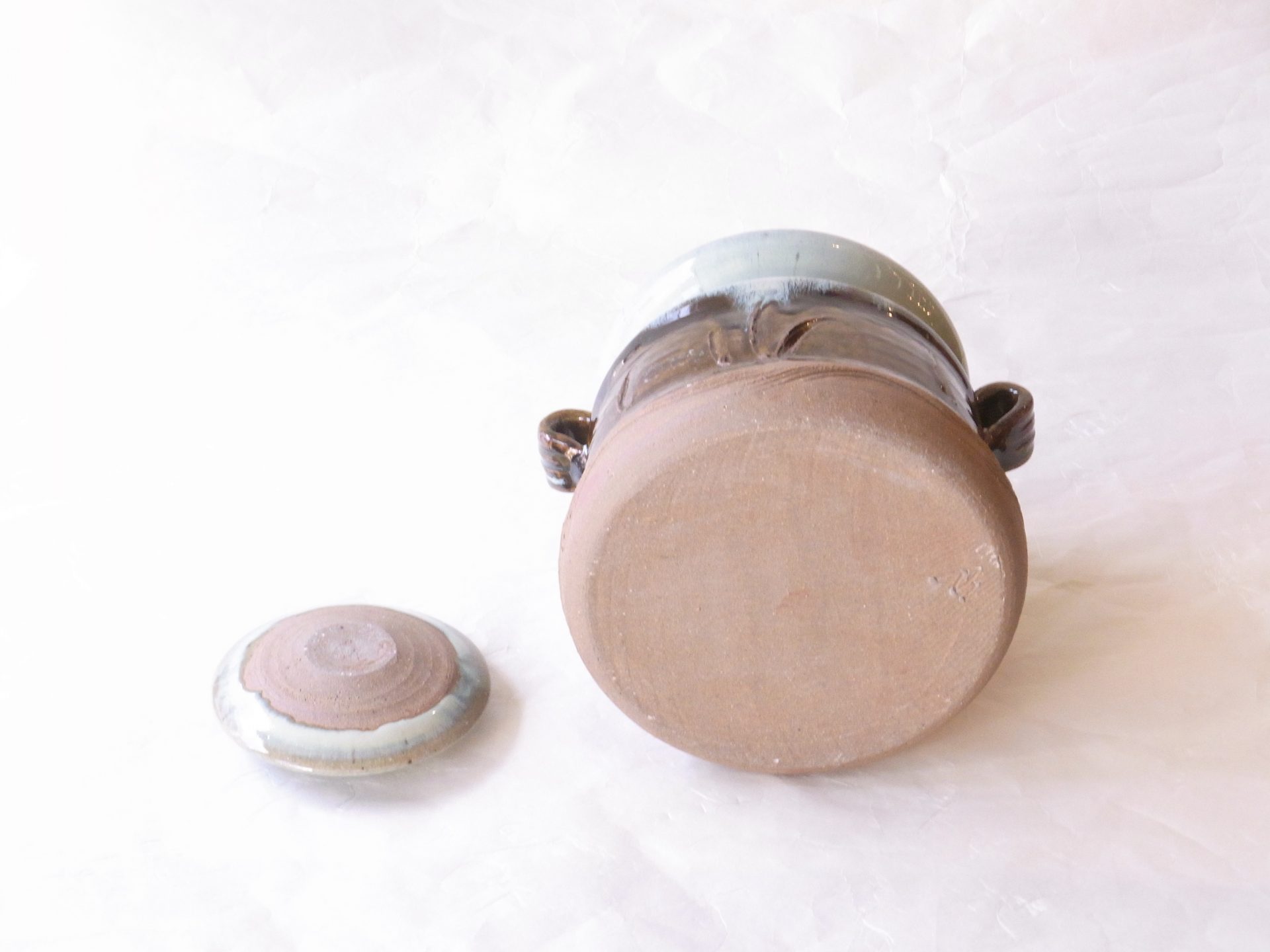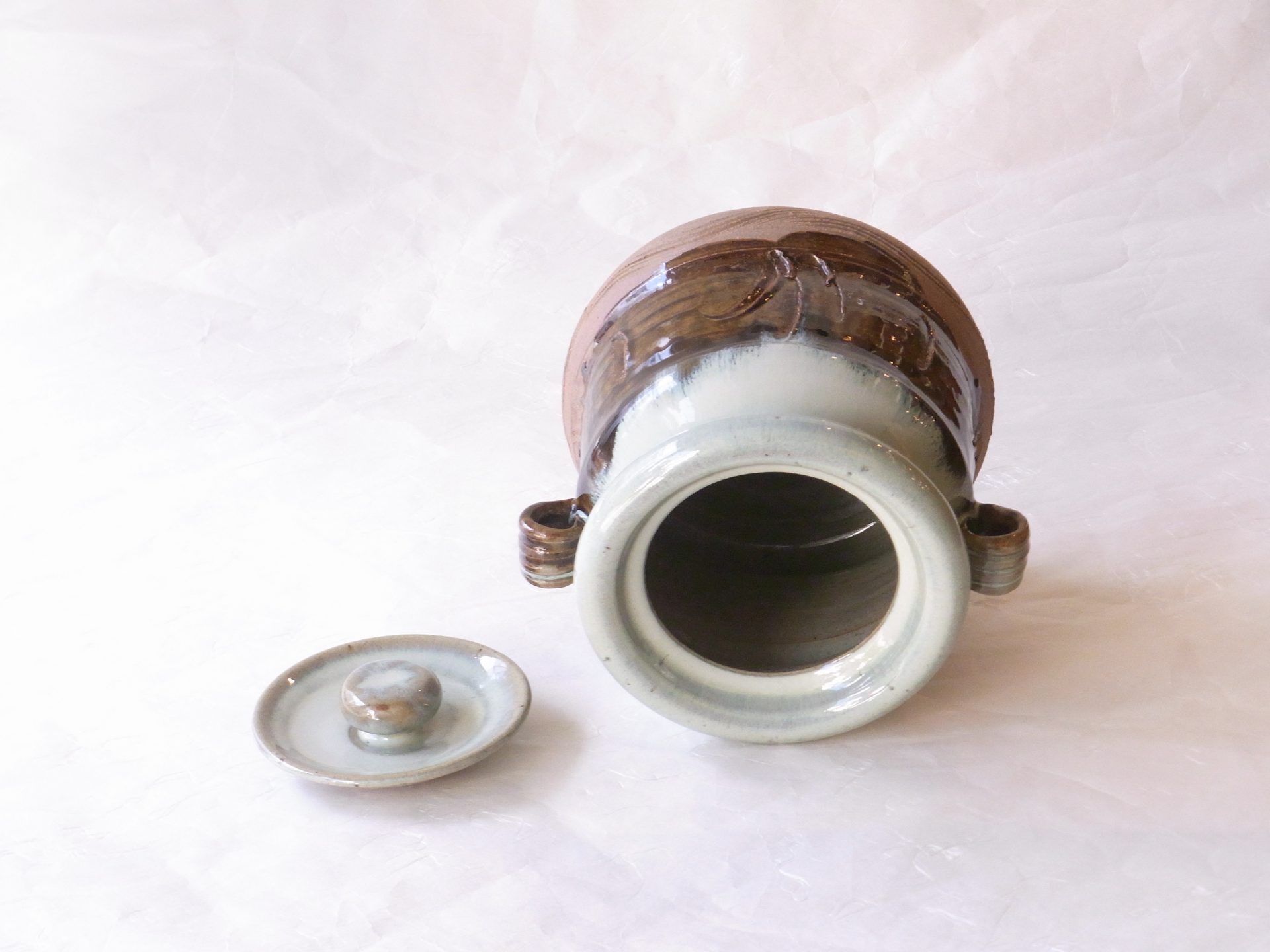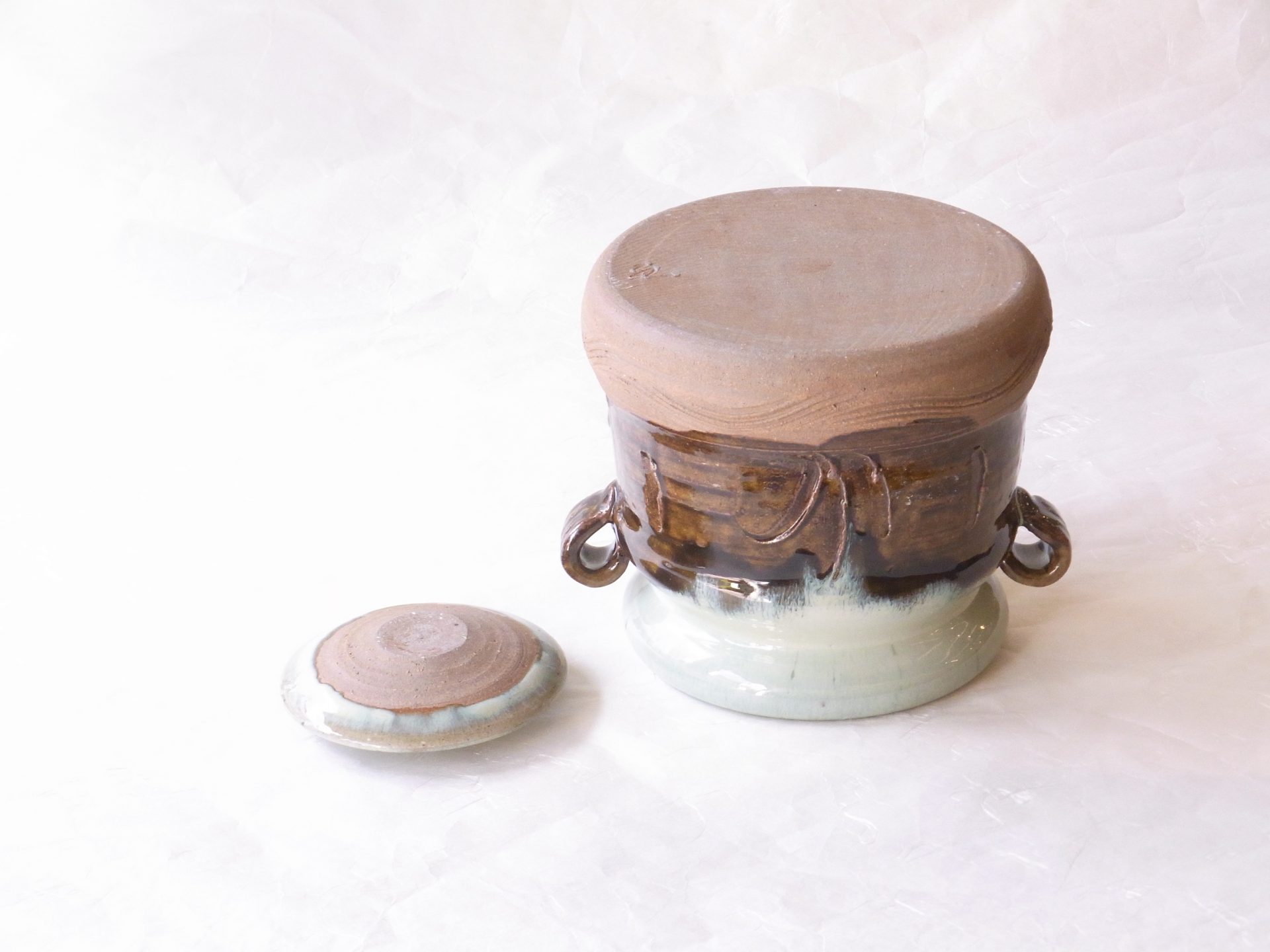中島紀義 作の朝鮮唐津の水指のご紹介です。
「朝鮮唐津」は唐津焼の一種で、元々天正から寛永にかけて作られたものが多く
赤黒の土を使い、海鼠釉と黒飴釉を掛け分けにしたものです。
唐津の窯で焼かれたことと、作風が朝鮮中部の諸窯で焼かれたものの流れを
汲むところから「朝鮮唐津」と呼ばれたと思われます。
これは名物唐津の一つとされ、茶人の間でもてはやされてきたようです。
この水指はこの作風を模して作られています。
最下部は、無釉で土がむき出しになっていて、中央部は黒飴釉がかかっています。
蓋と口周りの上部は海鼠釉がかけられ、2種類の釉薬の境目の釉薬の変化が
見ものです。
形は最下部が膨らみ、 中央部は少し細まり、その上の口の部分のすぐ下が
一旦くびれて、その後口径が広がっています。
耳の部分は両方の釉薬がかかっています。
また、胴の部分と下部には、ヘラで削がれた跡が模様となっており
デザインとされています。
蓋の摘みを大きめで使いやすくなっています。
全体に力強く、どっしりと重厚感のある水指となっています。
幅 19.5㎝ 口径 15㎝ 高さ 16㎝
It is an introduction of the water finger of The Korean Karatsu of Noriyoshi Nakajima.
“Korean Karatsu” is a kind of Karatsu ware, and many of them were originally made from Tensho to Kan’ei.
Using red-black soil, it is divided into sea rat glaze and black candy glaze.
The flow of the one that was burnt in the kiln of Karatsu and the one that the style was burnt in various kilns in the central part of Korea
It is thought that it was called “Chosun Karatsu” from the place where it drew.
This is considered to be one of the specialties Of Karatsu, and it seems to have been touted among tea master.
This water finger is made to imitate this style.
At the bottom, the soil is exposed without glaze, and the central part is covered with black candy glaze.
The upper part of the lid and mouth is glazed, and the change of the glaze at the boundary of the two types of glaze
It’s something to see.
The shape swells at the bottom, the center is slightly narrowed, and just below the mouth part above it
Once it is taken down, the caliber has spread.
The part of the ear is glazed on both.
In addition, the part and the bottom of the torso, has become a pattern trace scraped by a spatula
It has been a design.
The lid is large and easy to use.
It is strong in the whole, and it has become a water finger with a heavy feeling.
